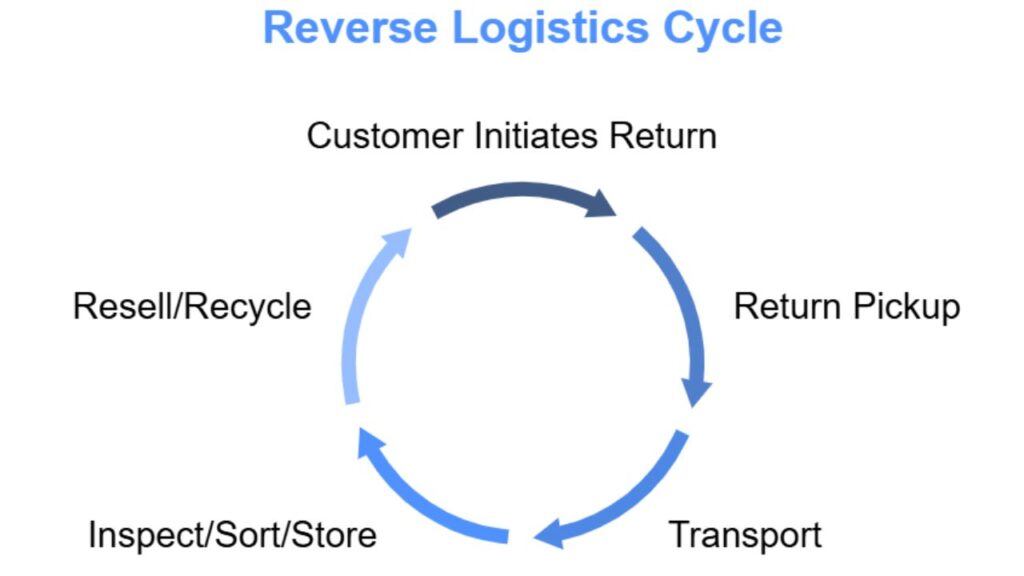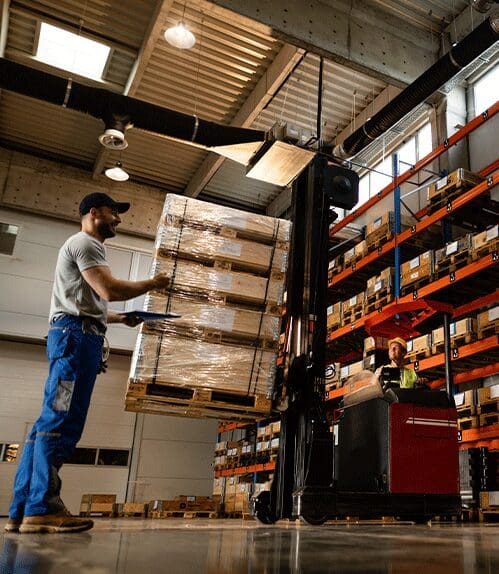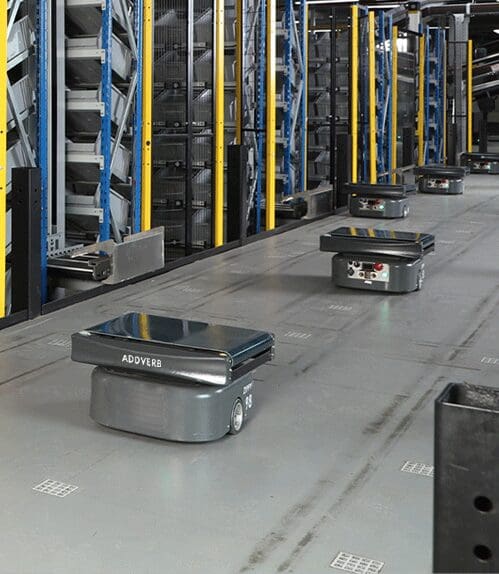Table of Contents
The global reverse logistics market was valued at USD 768.59 billion in 2023 and is projected to grow from USD 801.64 billion in 2024 to USD 1,166.81 billion by 2032.
Source: Fortune business Insight

Reverse logistics automation, often an overlooked aspect of supply chain management, plays a crucial role in today’s business landscape. It involves the return, remanufacturing, and redistribution of products. As the e-commerce sector continues to expand, the need for efficient reverse logistics automation solutions is becoming increasingly essential.
Reverse Logistics Automation: Transforming the Warehousing Landscape with Key Benefits

Improved Accuracy and Efficiency
One of the primary advantages of reverse logistics automation is the improvement in accuracy and efficiency. Automated systems can quickly and accurately sort, categorise, and process returned items, reducing errors and enhancing the speed of returns handling. This accuracy ensures that items are correctly identified, leading to better decision-making regarding whether to restock, refurbish, recycle, or dispose of them.
Streamlined Returns Processing
Reverse logistics often involves a wide variety of products, each requiring different handling processes. Warehouse automation, in tandem with reverse logistics software, allows for the seamless processing of returns. This enables companies to expedite the inspection, testing, and refurbishment of returned items, getting them back into the supply chain faster. The automation ensures that each product is directed to the right area for its respective disposition.
Enhanced Customer Experience
A smoother, quicker returns process ensures that customers have a positive experience even when returning products. Automation reduces the time customers have to wait for their refunds or replacements, leading to higher customer satisfaction and loyalty. By providing customers with a hassle-free return experience, businesses can build trust and brand loyalty.
Real-time Inventory Management

Automation provides real-time visibility into inventory levels, helping companies stay on top of returned goods and their condition. This enables better management of resources and helps in decision-making, such as restocking, reordering, or recycling. Having an accurate inventory picture is crucial in preventing overstocking and understocking of products, which can lead to financial losses and poor customer experiences.
Cost Reduction
Reverse logistics can be costly, especially if done manually. Reverse logistics automation significantly reduces labour costs associated with returns processing, making it a cost-effective solution for companies of all sizes. By automating routine, labour-intensive tasks, businesses can allocate their human resources to more value-added activities, such as refurbishing, quality control, and customer service.
Reduced Human Error
Manual handling of returned items is prone to human error, leading to misplacement or mishandling of products. Automation minimises these errors, ensuring that returned items are treated with care and precision. This reduced margin of error guarantees that items are processed accurately and consistently, reducing the chances of customer complaints and further streamlining the return process.
Sustainability and Recycling
Reverse Logistics Automation can contribute to sustainable Warehouse logistics practices. By automating the recycling process for returned products, companies can minimise waste, promote recycling, and reduce their environmental footprint. This not only aligns with corporate social responsibility objectives but also reduces the environmental impact of disposing of products that can be salvaged and reused.
Customised Solutions
Reverse logistics Automation software solutions can be customised to meet specific business needs. Companies can tailor these systems to handle various types of returned products, from electronics to clothing, making it a versatile tool for diverse industries. This adaptability ensures that the software is finely tuned to meet the unique demands of each business, enhancing efficiency and accuracy.
Scalability
Automation solutions are scalable, allowing companies to adjust the system’s size and capacity as their business grows. This adaptability ensures that your reverse logistics automation processes can keep up with changing demand. As e-commerce businesses experience peaks during sales seasons, having a scalable system allows for efficient handling of increased return volumes.
Data Analytics

With automation, companies can collect and analyse data related to returns, helping them gain insights into customer behaviour, product quality issues, and areas for process improvement. This data-driven approach enables companies to make informed decisions to enhance their reverse logistics strategy. Businesses can identify trends in return reasons, assess the condition of returned items, and fine-tune their product offerings to reduce returns in the future.
Competitive Advantage
Companies that implement warehouse automation in reverse logistics gain a competitive edge. Faster returns processing, reduced costs, and better customer experiences can set a business apart from competitors and improve its market position. A reputation for efficient reverse logistics can attract more customers and foster brand loyalty, giving businesses a distinct advantage in the highly competitive e-commerce industry.
In today’s consumer-driven economy, reverse logistics is gaining importance as companies seek to provide a seamless return experience for their customers. Warehouse automation is at the forefront of this transformation, offering numerous benefits such as increased efficiency, cost reduction, and improved customer satisfaction. By integrating reverse logistics software and automation systems, businesses can not only address the challenges of returns but also turn them into opportunities for growth and sustainability.
To stay competitive in the market, companies must consider the adoption of warehouse automation as an essential element of their reverse logistics strategy, Addverb can partner and help in the transformation, contact us today and Whether it’s enhancing accuracy, streamlining processes, reducing costs, or contributing to sustainability, warehouse automation has the potential to revolutionise the reverse logistics game, ultimately leading to greater customer satisfaction and a stronger market presence.

FAQ
What is reverse logistics automation?
Reverse logistics automation uses technology to streamline the returns, remanufacturing, and redistribution processes, improving efficiency and reducing costs.
How does automation improve accuracy in reverse logistics?
Automation reduces errors in return processing by quickly and accurately sorting and categorising returned items.
Can reverse logistics automation enhance customer satisfaction?
Yes, it speeds up returns, leading to faster refunds or replacements, which boosts customer loyalty.





